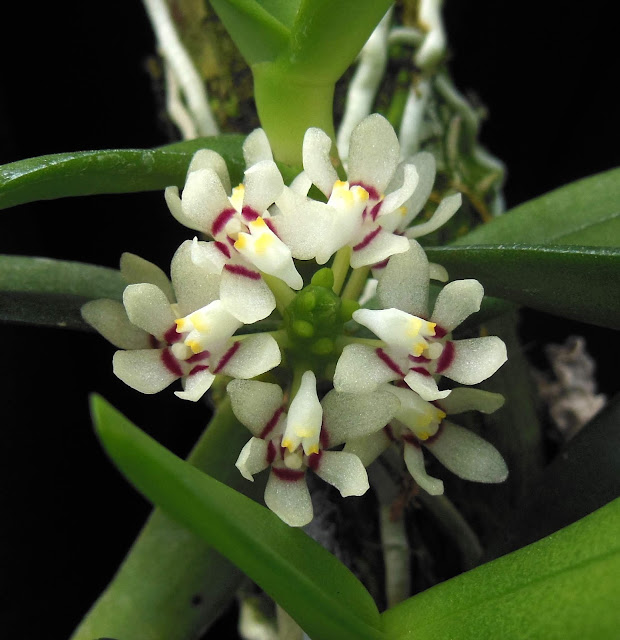The lovely miniature orchid Trachoma phillipsii
Similar to many other orchids with ephemeral flowers, the production of buds is triggered by an environmental stimulus i.e. a sudden drop in temperature such as after rains. The flowers of Trachoma may be short-lived, but are very attractive and often strongly fragrant.
Trachoma phillipsii was described as Tuberolabium phillipsii by Timothy Choltco in 2007; Alexander Kocyan and Andre Schuiteman transferred it to Trachoma in 2014. As far as is currently known, this taxon appears to be restricted only to Nueva Vizcaya on Luzon. The plant was named after Andy Phillips, owner of Andy's Orchids in Encinitas, California and the importer of the plants from where the original description was taken.
 |
| Trachoma phillipsii |
If you like species orchids, including the miniatures, these are easy plants to maintain in cultivation as long as drastic temperature swings are avoided. As with other species from the genus, this taxon produces inflorescences which stay dormant for up to a number of months until a sudden downpour triggers the formation of buds. However, there are instances when such sudden precipitation fails to coax the plants into flowering. Fertilize all you want, but you'd be hard-pressed to get them into flower. It would appear that only the plants 'know' when the time is right for blooming, but when it does, different plants does so synchronously. And when they do bloom, boy do they make a show! Get your camera ready because those flowers do not last all day long, but you'll be rewarded by that sweet scent as you snap off some frames.
I have noted that these plants bloom during the months of March, August, and November, but would not be surprised if they do at other months of the year. If your plant isn't flowering even after a few seasons, something in your climate or cultivation regime is preventing it to do so. Naturally, if you are more familiar with the cultivation of the more obliging hybrids, species such as this will make you pull your hair in frustration (I have).
As with many other diminutive orchids, this species can be mounted on wood, or cultivated on small pots. Bright, filtered light, stable conditions, and regular fertilizing via watering is enough to keep plants happy. This species does not seem to perform well in lowland tropical climates unless the prevailing clime allows sufficient nocturnal temperature drops. In due time, side growths appear along the stems but these cannot be snipped off to produce more plants as these shoots very rarely produce their own roots.
 |
| This plant of Trachoma phillipsii has flowered a couple of times before. |
 |
| Trachoma phillipsii with darker, orange-yellow spots on the labellum. |




Comments
Post a Comment